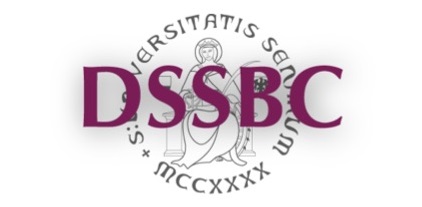The IMAV 2017 Distinguished Lecture
During the IMAV 2017 Banquet on Thursday Sept. 20, 2017 at 7pm, the following lecture will be delivered :
Dr. Greg ROBERTS
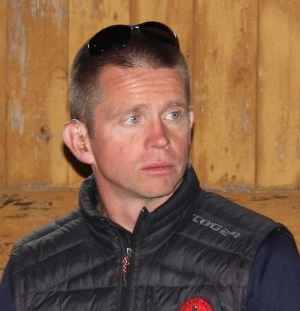
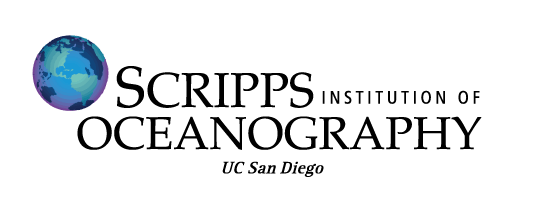

Fields notes from above: Deploying drones for atmospheric science
About the speaker
Dr. Greg Roberts is an atmospheric scientist at the Centre National de Recherches Météorologiques (CNRM) in Toulouse, France with a joint-appointment at Scripps Institution of Oceanography in La Jolla, USA. His recent research has focused aerosol-cloud interactions and the on the development of a miniaturized, autonomous observing systems for deployment in unmanned aerial systems (UAS), balloons and light aircraft. Roberts has extensive experience with UAS operations and is coordinating several UAS projects at CNRM to study clouds, aerosol fluxes, turbulence and fog using multi-dimensional observation approaches. Roberts is a member of ISARRA (International Society for Atmospheric Research using Remotely Piloted Aircraft) and the GIS-Micro-Drone working group (Toulouse). In addition, Roberts has co-patented a cloud chamber that is now an international standard for understanding aerosol-cloud interactions.
KEYNOTES SPEAKERS
Prof. BEN M. CHEN
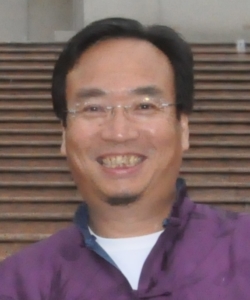
Development of a Tail-Sitter Hybrid Unmanned Aerial Vehicle
Abstract
In this talk, we aim to present the development of a hybrid unmanned aircraft, which has both vertical take-off and landing (VTOL) and cruising fight capabilities. The platform is in tail-sitter structure. It combines the advantages of a fixed-wing plane and a rotor helicopter effectively. It allows to transit from vertical take-off to hovering, before flying in cruise mode for efficient long duration fight. The drone can transit back to the VTOL mode for landing. The transition between the VTOL and fixed-wing modes are highly nonlinear and challenging. Our design has been successfully verified by actual fight experiments..
About the speaker
Ben M. Chen is currently a Professor and Provost’s Chair in the Department of Electrical and Computer Engineering, National University of Singapore. He is also serving as the Director of Control, Intelligent Systems and Robotics Area. His current research interests are in the development of unmanned aerial systems, and financial market modeling.
He is the author/co-author of 10 research monographs including H2 Optimal Control (Prentice Hall, 1995), Robust andH-infinity Control (Springer, 2000), Hard Disk Drive Servo Systems (Springer, 1st Edition, 2002; 2nd Edition, 2006), Linear Systems Theory (Birkhäuser, 2004), Unmanned Rotorcraft Systems (Springer, 2011), and Stock Market Modeling and Forecasting (Springer, 2013). He had served on the editorial boards of a number of journals including IEEE Transactions on Automatic Control, Systems & Control Letters, and Automatica. He currently serves as an Editor-in-Chief of Unmanned Systems and a Deputy Editor-in-Chief of ControlTheory & Technology. Dr. Chen is an IEEE Fellow.
Webpage: http://uav.ece.nus.edu.sg/
Dr. MIRKO KOVAC
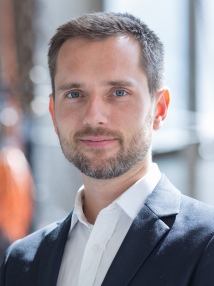

Flying Robot Companions for Future Smart Cities
Abstract
The rise of robotics offers a unique opportunity to re-imagine the design and function of urban environments. Future smart cities will behave like complex ecosystems in which humans, nature and robots exist in symbiosis, performing various tasks that are laborious, dangerous or expensive to do by manual means. In these future cities, swarms of friendly flying robots could interact autonomously with humans to serve society for e.g. construction and repair of buildings, urban logistics and environmental monitoring. Some of the most exciting prospects for these future robotics systems draw their inspiration from energy-efficient, adaptive strategies seen in living organisms that can thrive in complex, changing environments.
In this talk, Dr. Mirko Kovac will show the newest bio-inspired flying robots that have been developed at the Imperial College Aerial Robotics Laboratory illustrating how the study of natural systems can enable next-generation aerial robots to enhance operations and human wellbeing in future cities.
About the speak
Dr. Mirko Kovac is director of the Aerial Robotics Laboratory at the Aeronautics Department at Imperial College London. His research interest is the conception and implementation of novel mobility solutions for robotics and agent based autonomous manufacturing. Before his appointment in London, he was post-doctoral researcher at at Harvard University and he obtained his PhD at the Swiss Federal Institute of Technology in Lausanne (EPFL). He received his M.S. degree in Mechanical Engineering from the Swiss Federal Institute of Technology in Zurich (ETHZ) in 2005. During his studies he was research associate with the University of California in Berkeley USA, RIETER Automotive Switzerland, the WARTSILA Diesel Technology Division in Switzerland, and CISERV in Singapore. Since 2006, he has presented his work at numerous international conferences and in journals and has won several best paper and best presentation awards. He has delivered 24 keynote lectures and 28 invited talks on bio-inspired robotics at leading research institutions and conferences world wide including the World Knowledge Dialogue Symposium 2008, the Robotics Systems and Sciences conference as well as the London Innovation Summit 2014 and 2016. He is also advisor to the U.K. government on the topic of Aerial Robotics and is regularly consulting on technology foresight and strategy development for industry.
Webpage: http://www.imperial.ac.uk/aerialrobotics
Twitter: @AerialRobotics, @MKovacRobotics
fax: +44 (0)20 7594 1974
Prof. ERIC N JOHNSON
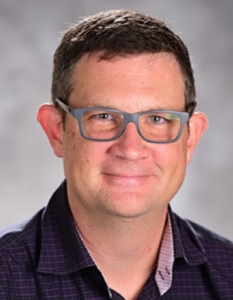
How to get complex things working as soon as possible
Abstract
Developing highly automated aerial systems to perform complex missions inherently includes a significant number of challenges. Designs must be made, algorithms chosen/developed, hardware procured, software written, and everything brought together and tested safely; all within time and budget. For Unmanned Aerial Systems (UAS) specifically, there is also great emphasis on incorporation of new technology that adds new capabilities. As any competitor in IMAV knows, getting this all to work is not easy. This presentation will offer some easy-to-remember and actually use guidance on performing these types of complex system design and integration activities. This includes how to prioritize development and testing activities as well as some specific methods that can enable things to happen more quickly and with greater confidence. This presentation will utilize case studies from several autonomous air vehicle challenges and related projects.
About the speaker
Dr. Johnson’s research interests include: Fault Tolerant Estimation and Control as enabled by advancements in digital processing and new sensor technologies; Aerospace Vehicle Design, particularly as enabled by digital avionics (micro-air vehicles, unmanned aerial vehicles (UAVs), autonomous vehicles, and new configurations); Digital Avionics Systems, including architectures and redundancy management; and Modeling/Simulation, including improving aerospace system design and integration processes. This research includes the development and operation of several research UAVs, including the GTMax helicopter research UAV. Prior to joining the Aerospace Engineering faculty, Dr. Johnson held positions with The Charles Stark Draper Laboratory, Inc., Lockheed Martin Aeronautics Company, and at the NASA Langley Research Center. His academic and industry research experience is in the design and integration of avionics systems, including: the X-33, the C-5 Avionics Modernization Program, the C-130J, the Draper Small Autonomous Air Vehicle, and other airplane, helicopter, submersible, and launch vehicle programs. Dr. Johnson is also an instrument-rated private pilot.
Website: http://www.uavrf.gatech.edu/
Prof. SIMON WATKINS
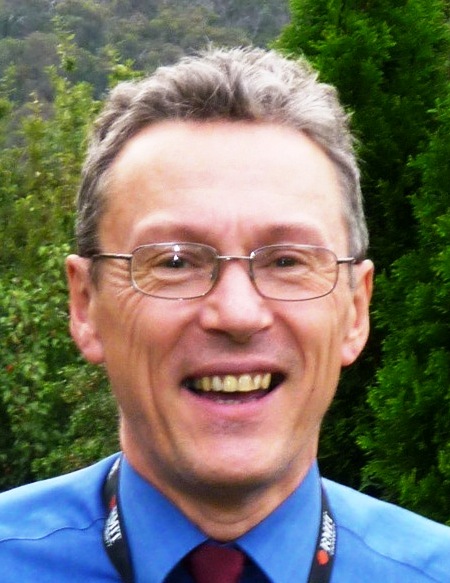
Towards better MAVs and what we can learn from birds and bees
Abstract
The typical flight environment of nature’s fliers and micro air vehicles is turbulent as depicted above. It is characterised by relatively high levels of turbulence inherent in the lower levels of the atmospheric boundary layer. This highly energetic environment can result in large dynamic inputs which reduce only slightly as wingspans reduce, whereas the inertial resistance to inputs decreases rapidly with wingspan. As some of the main uses of MAVs will take them close to and possibly into, buildings this raises new challenges which have not been addresses by traditional aeronautical research. These include endurance, noise (it’s reduction and human response to noise type), rapid control movements with limited actuator power and highly accurate autonomous tracking in the presence of strong wind gradients. An overview of recent work at RMIT on addressing these challenges will be given with a focus on advances in reducing the deleterious movement associated with turbulence (or “gusts”).
About the speaker
Simon Watkins is Professor of Engineering at RMIT University. He graduated in Aeronautical Engineering from Bristol University UK, then worked at British Aerospace UK (where he became disillusioned stressing rivets) and at City University London (on the aerodynamics of mag-lev trains) before going to Australia in 1983. For his PhD (RMIT, 1990) he measured and replicated atmospheric turbulence as experienced by ground-based vehicles. He is an avid aero modeller and designed many very small radio-controlled aircraft. Measurements performed for his PhD explained why so many crashed on windy days and he continues to be fascinated by turbulence, why birds and bees are so good at overcoming it and how we can learn from their efforts. He has supervised over 30 postgraduates by research and leads the RMIT UAS Research Team
Website: http://ruasrt.com
Prof. STEFANO CAMPANA
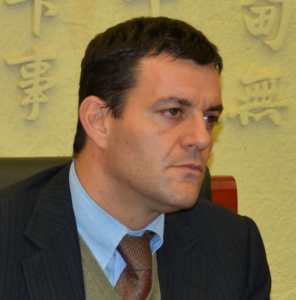
Drones in Archaeology. State-of-the-art and Future Perspectives.
Abstract
In addition to traditional platforms for low-level remote sensing (balloons, kites, etc.) new and more complex automated systems [unmanned aerial vehicles (UAVs) or drones] have become available in the last decade. The success and market expansion of these platforms has been a driving force in the development of active and passive sensors specifically designed for UAVs. In the last few years archaeologists have started testing both platforms and sensors,
particularly for the following applications: three-dimensional (3D) documentation of archaeological excavations; 3D survey of monuments and historic buildings; survey of archaeological sites and landscapes; exploratory aerial survey; and the archaeological survey of woodland areas. The scale of these applications has ranged from site-based to landscapes-based (approximately up to about 10 km2 in extent). The role of such platforms in the archaeological survey of excavations and landscapes, and in diagnostics more generally, is of great interest and is inexorably growing.
About the speaker
Stefano Campana is currently faculty member of the University of Siena (Italy),in the Department of History and Cultural Heritage, where he has engaged inteaching and research as senior lecturer in ancient topography. He is specializing in landscape archaeology, remote sensing, GIS, and archaeological methodology for purposes of research, recording, and conservation. His work is focused on the understanding of past landscapes from prehistory to the present day. The principal context for his work has been Tuscany, but he has also participated in and led research work in the UK, Spain, Turkey, Palestine, Iraq and Asia. He has been very active in the international sphere and has established a sound reputation for innovative research. In 2011, he was proposed and admitted as a fellow of the Society of Antiquaries of London (FSA), and in 2012, he was invited to be a member of the General Management Board of HIST, the Governing Board of the International Centre on Space Technologies for Natural and Cultural Heritage, under the auspices of UNESCO and the Chinese Academy of Sciences. From 2014 to 2016 he was Senior Marie Curie Research Fellow at the University of Cambridge (UK), Faculty of Classics. There, he initiated a totally new project under the title ‘emptyscapes’, aimed at stimulating change in the way archaeologists in the Mediterranean world study the archaeology of landscapes, moving from an essentially site-based approach to a truly landscape-scale perspective.
Website: https://www.dssbc.unisi.it/en
Prof. Dr. habil. JENS BANGE
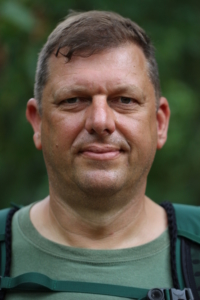
Using small UAV for atmospheric turbulence measurements.
Abstract
Unmanned small research aeroplanes (UAV) are a very suited instrument for the investigation of atmospheric turbulence, its structure and the turbulent transport of energy, momentum, gases and particles. The presentation will discuss in situ measurement approaches and compare the pros and cons of manned research aircraft and small UAV. Due to the requirement of turbulent wind measurements, the presentation is focused on fixed-wing aircraft. As an example for a small research UAV, the system MASC (Multi-purpose Airborne Sensor Carrier) and its scientific equipment will be explained, with emphasise on the turbulent wind vector measurement. Finally, results obtained from small research UAV in wind-energy research will be shown, with focus on the spatial wind field in complex terrain – possibly the most challenging applications for such research UAV.
About the speaker
Prof. Dr. habil. Jens Bange is Head of the Environmental Physics group at the University of Tübingen, Germany
Academic qualification:
1992: Diploma in Physics (University of Hannover)
1998: PhD in Meteorology (University of Hannover)
2008: Habilitation in Flight Meteorology (venia legendi) at Technische Universität Braunschweig
since 2010: Professor for Environmental Physics, Eberhard Karls University of Tübingen
Founder member of ISARRA (International Society for Atmospheric Research using Remotely piloted Aircraft), his main research interests are:
– turbulent structure and transport in the atmospheric boundary layer
– turbulence measurement using automatically operating small aircraft (UAV)
– wind-energy research
– development of new sensors and measurement strategies
Website: http://www.geo.uni-tuebingen.de/umphy



